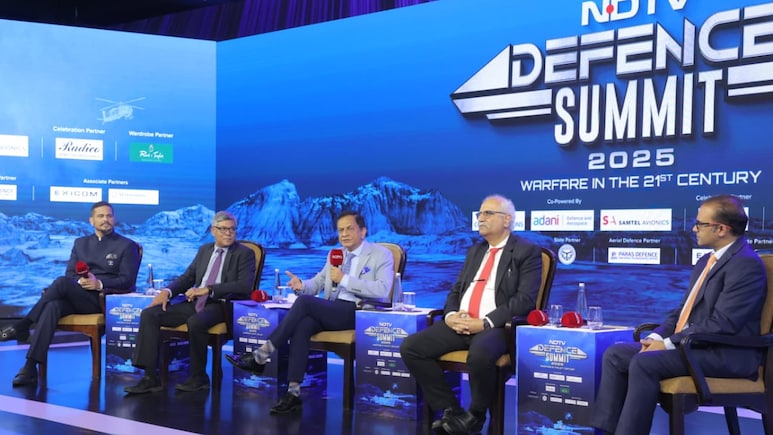
The need of the hour is increased collaboration between India's military and defence manufacturing units, whether in the private or public sector, with the government - the sole buyer of weapons and weapon systems - acting to spur R&D and ensure a level playing field all around, a panel of manufacturers said Friday at NDTV's annual defence summit.
In a discussion on Building India's Defence Backbone, the focus was on the rapidly-changing nature of warfare and the need for a defence ecosystem of scientists and manufacturers, working with the government to ensure a stream of cutting-edge weapons and weapon systems.
And the importance of collaboration and innovation in the defence sector was also underlined, especially with reference to Operation Sindoor, India's military response to Pahalgam.
"Three things came out of Operation Sindoor," Ashish Rajvanshi, the Chief Executive Officer of Adani Defence and Aerospace, said, "The first was a lot more collaboration and open dialogue between customer (i.e., the armed forces, the government) and the industry. Distrust that was there earlier vanished. It was almost like coming together for a single mission."
"The second, the last war is not a reflection of the next. The domain of warfare is going to evolve on a daily basis. So assuming that technology inducted today is going to stay for the next 20 years is impossible," he said, referring to the increased use of drones during Op Sindoor.
Drones warfare, in particular, represents a paradigm shift in modern combat scenarios, not only because it reduces risk to soldiers but also because it significantly expands a military's surveillance and strike capabilities, as evinced during Operation Sindoor.
But for technologies like drones or cyber-warfare, which shifts focus to a digital battlefield, demanding enhanced investment and R&D in encryption, AI-driven cyber defence systems, and, of course, infrastructure like servers protected from physical enemy attacks.
Arun T Ramchandani, the Senior Vice President from L&T Precision Engineering & Systems, picked up on that point, saying, "Now, more than ever, there is a need for collaboration (within various elements of the defence sector, including private manufacturers). The landscape of warfare is changing so fast... if we really want to advance our armed forces and leapfrog others we need to put an entire ecosystem together, with elements of R&D and innovation, manufacturing, operations and maintenance... but this impossible for any single entity."
"So we have to work together," he said, also including the world of defence start-ups.
Collaboration over the churn of production of weapons and weapon systems also involves much faster cycles of technology obsolete, and that is another challenge for the defence sector, particularly in the context of the government's slower acquisition cycles.
Neelesh Tungar, President of Defense Bharaforge and CEO of Kalyani Strategic Systems, said, "If you look today... the technology is changing every three years. But if your acquisition cycle going to be seven years, then you will have three-year-old tech in the field."
To counter this, it is necessary also for the government to ramp up spending on defence R&D, he said, as this will create more funding for weapons and weapon systems research and, importantly, also distribute the pressure of R&D across public and private sector units.
Meanwhile, all of this - i.e., coordination between defence sector elements, improved R&D and innovation, better and more efficient manufacturing, a more purposeful liaison with the Indian military - throws the focus on a crucial element, people.
Mr Rajvanshi made that point when he said the third learning from Op Sindoor was training soldiers, particularly on the frontlines, to receive and understand increasingly technology-based or oriented military solutions.
Track Latest News Live on NDTV.com and get news updates from India and around the world

